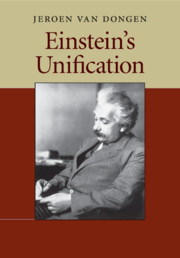Book contents
- Frontmatter
- Contents
- Acknowledgments
- Introduction
- 1 Formulating the gravitational field equations
- 2 On the method of theoretical physics
- 3 Unification and field theory
- 4 Experiment and experience
- 5 The method as directive: semivectors
- 6 Unification in five dimensions
- 7 The method and the quantum
- Conclusion
- References
- Index
Conclusion
Published online by Cambridge University Press: 05 May 2013
- Frontmatter
- Contents
- Acknowledgments
- Introduction
- 1 Formulating the gravitational field equations
- 2 On the method of theoretical physics
- 3 Unification and field theory
- 4 Experiment and experience
- 5 The method as directive: semivectors
- 6 Unification in five dimensions
- 7 The method and the quantum
- Conclusion
- References
- Index
Summary
The aim of this book has been to understand Einstein's development and see the historical coherence in his later attitude to physics. The key that unlocks the later Einstein is the road by which he arrived at the field equations of general relativity, “the most joyous moment of my life.” With superficial hindsight, mathematical intuition and deduction had played the essential creative role, whereas his “physics first” arguments appeared to have been a hindrance. As we saw, his epistemology and methodology gradually changed accordingly, just as they were reflections of, and influences on his practice in unified field theory. The re-shaped methodological beliefs were readily invoked to justify the further mathematization of his research, and its increasing alienation from the realm of experience.
The semivector episode showed that Einstein's methodological beliefs were explicitly put to use when he was trying to make and motivate choices in his actual research. Semivectors appeared to deliver a most appealing result – the unified description of electrons and protons – and they figured prominently in the Spencer lecture. Soon it became clear, however, that only a Pyrrhic victory had been won; but Einstein, of course, did not retract his words spoken in Oxford on the method of theoretical physics.
- Type
- Chapter
- Information
- Einstein's Unification , pp. 184 - 190Publisher: Cambridge University PressPrint publication year: 2010



